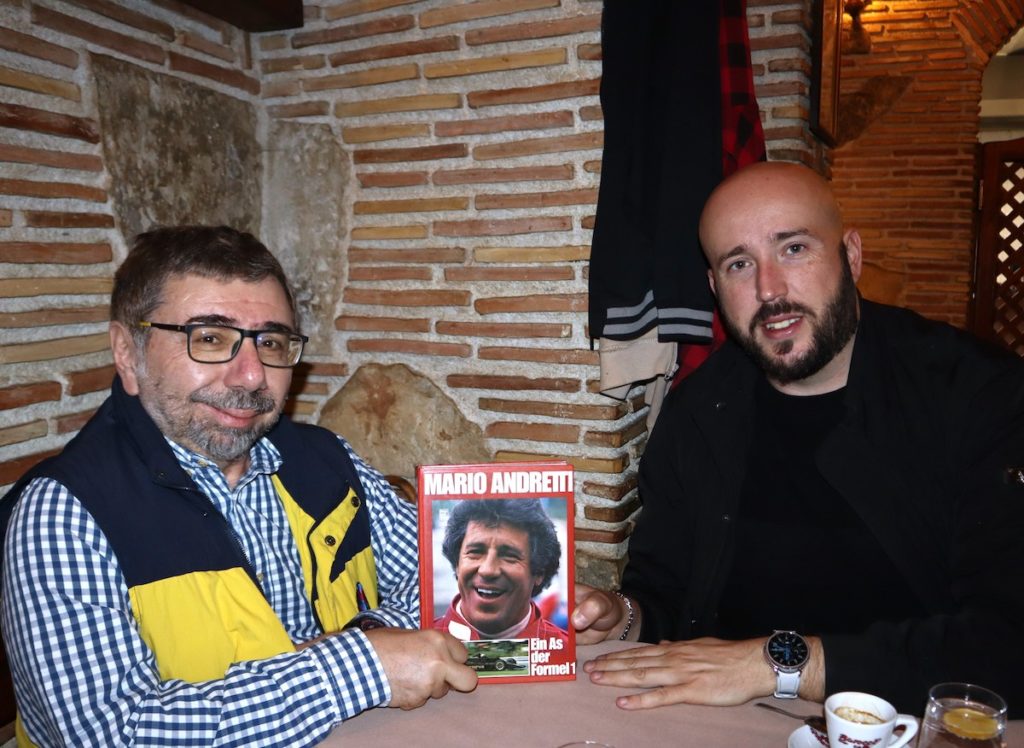
Mario Andretti is one of the most iconic figures in the world of motorsport, but few are aware that the 1978 F1 World Champion and Indy 500 winner was born in a tiny village on the Istrian peninsula, then in Italy, today part of Croatia. Károly Méhes visits Motovun to learn more.
- Images © Károly Méhes
- Text editing by Andrew Balfour
If you are a Formula 1 fan and you happen to be cruising along the Adriatic coast in northern Croatia, there’s one pitstop you must make. Motovun, a small and ancient village on top of a hill in the middle of the Istrian Peninsula, is where it all began for motor racing legend Mario Andretti.
Approaching the town, it’s easy to imagine how life must have been earlier last century when asphalt roads were non-existent, and this was a distant outpost of Italy under the regime of Benito Mussolini. It was here on February 28, 1940, that Rina and Alvise Andretti welcomed the birth of twin boys, Aldo, and Mario.


The layout of the medieval village does not allow for many cars on the rather uneven pavement stones, so we opted to climb the stairs to the main square. It really feels like we could be in rural Italy, despite the town now belonging to Croatia (and being part of communist Yugoslavia from 1948-1991).
Motovun is quiet on the last day in November, but the weather is pleasant, with the temperature around 12°C (54°F). As the local tourist chief, David Matković, later explains, the village is popular in the summer months, attracting some 350,000 visitors annually. It’s no surprise, then, to see many hotels and guesthouses scattered through the village and the surrounding valley.

Mario Andretti’s grandparents were hoteliers as well and owned one of the village’s most popular restaurants. The surrounding area is famous for its truffles, and local shops offer various truffle-based products, such as oils and cheeses. Entering one such shop, I was immediately drawn to a picture on the wall; Mario Andretti posing with the owner outside the shopfront a few years ago.
David Matković informs me that Andretti is a regular visitor to the village of his birth. Of course, he is still a fluent speaker of Italian and as Motovun’s inhabitants are mostly bilingual, there are no problems with communication. Just before the Covid pandemic, Andretti even invited his extended family, some 29 people, to a gathering in the village so they could see where his journey began.

Andretti has fond memories of his childhood; he loved and still loves the village. His mother Rina recounted how Mario and his twin brother Aldo, aged two years old, would take pot lids out of the cupboards and run around the kitchen, going “Vroom, vroom,” like they were driving cars. In 1945, at age five, he and Aldo were racing their hand-crafted wooden cars through the steep streets of their hometown. [Source: Wikipedia] Who knows, if politics hadn’t intervened after the end of World War II, maybe the Andretti family would never have left their home in 1948? (The family initially ended up in a refugee camp in Lucca, Italy, before emigrating to the USA in 1955).
After a little bit of searching, we find the house where Mario Andretti was born. It is in a tiny street, even narrower than the others, but once you are there you cannot miss it. A marble plate on the outside of the house, placed by the Oldtimer Klub from nearby Pula, announces in both Croatian and Italian that this is the house where the 1978 Formula 1 World Champion was born.

Unlike other countries behind the Iron Curtain, Motovun residents were able to follow Andretti’s exploits in Formula 1 in the 1970s since the sport was broadcast on state television in Yugoslavia. Now, the locals are looking forward to seeing Team Andretti enter Formula 1 in 2026. I joked with the tourist chief, David Matković, that maybe they will put a little sticker on the Andretti car inviting everyone to ‘visit Motovun, birthplace of the Andretti legend.’ Stranger things have happened!



nice